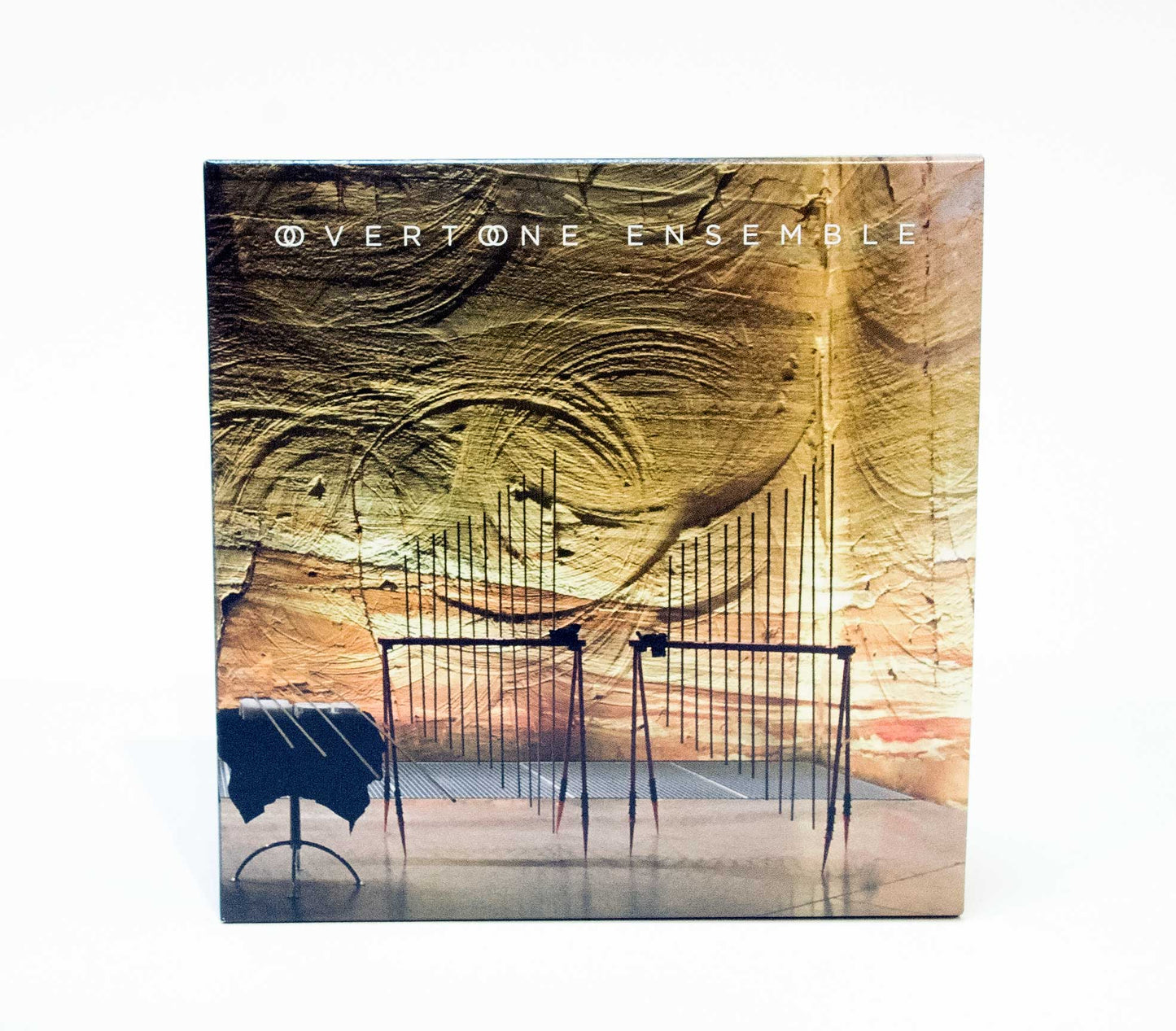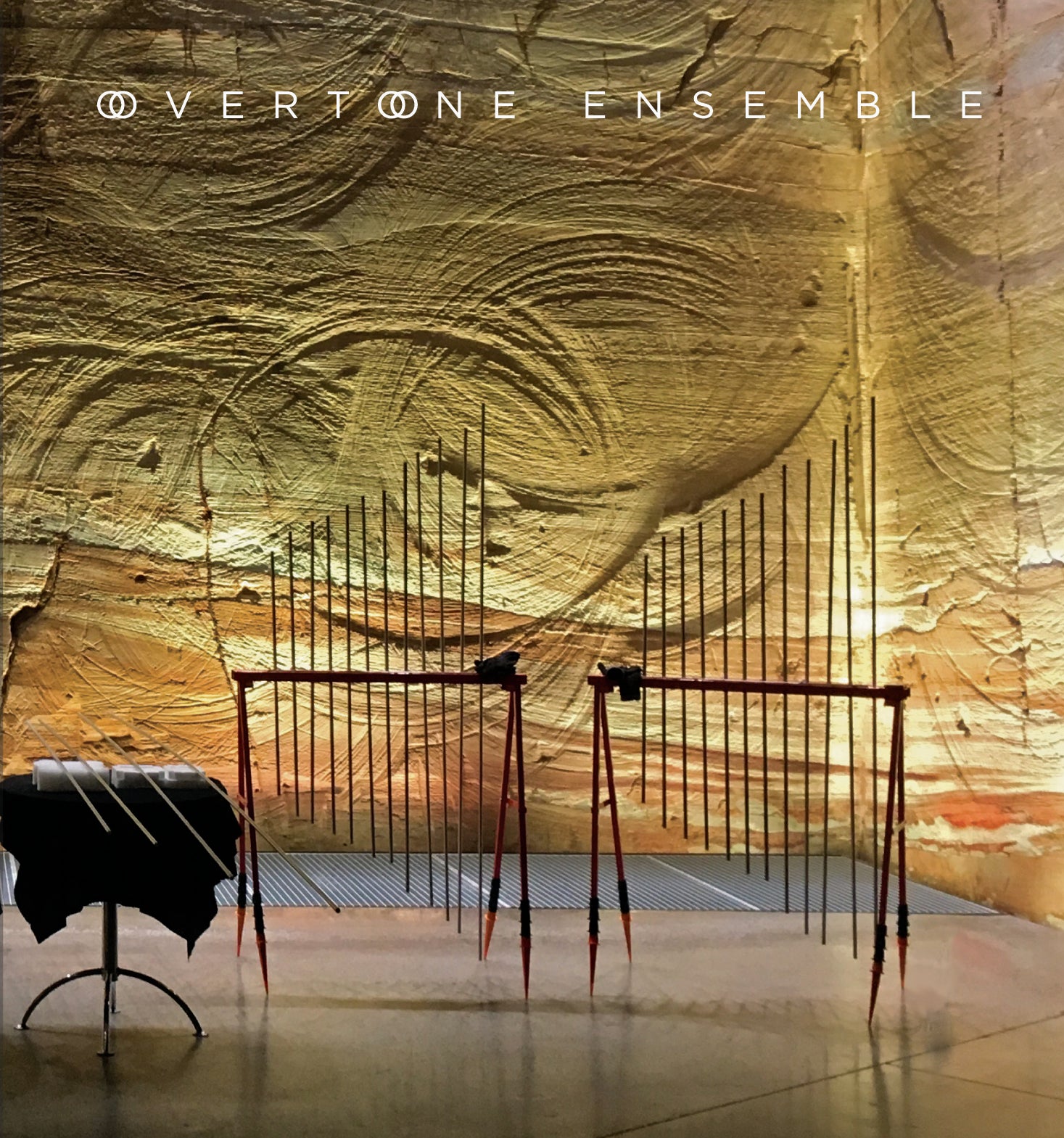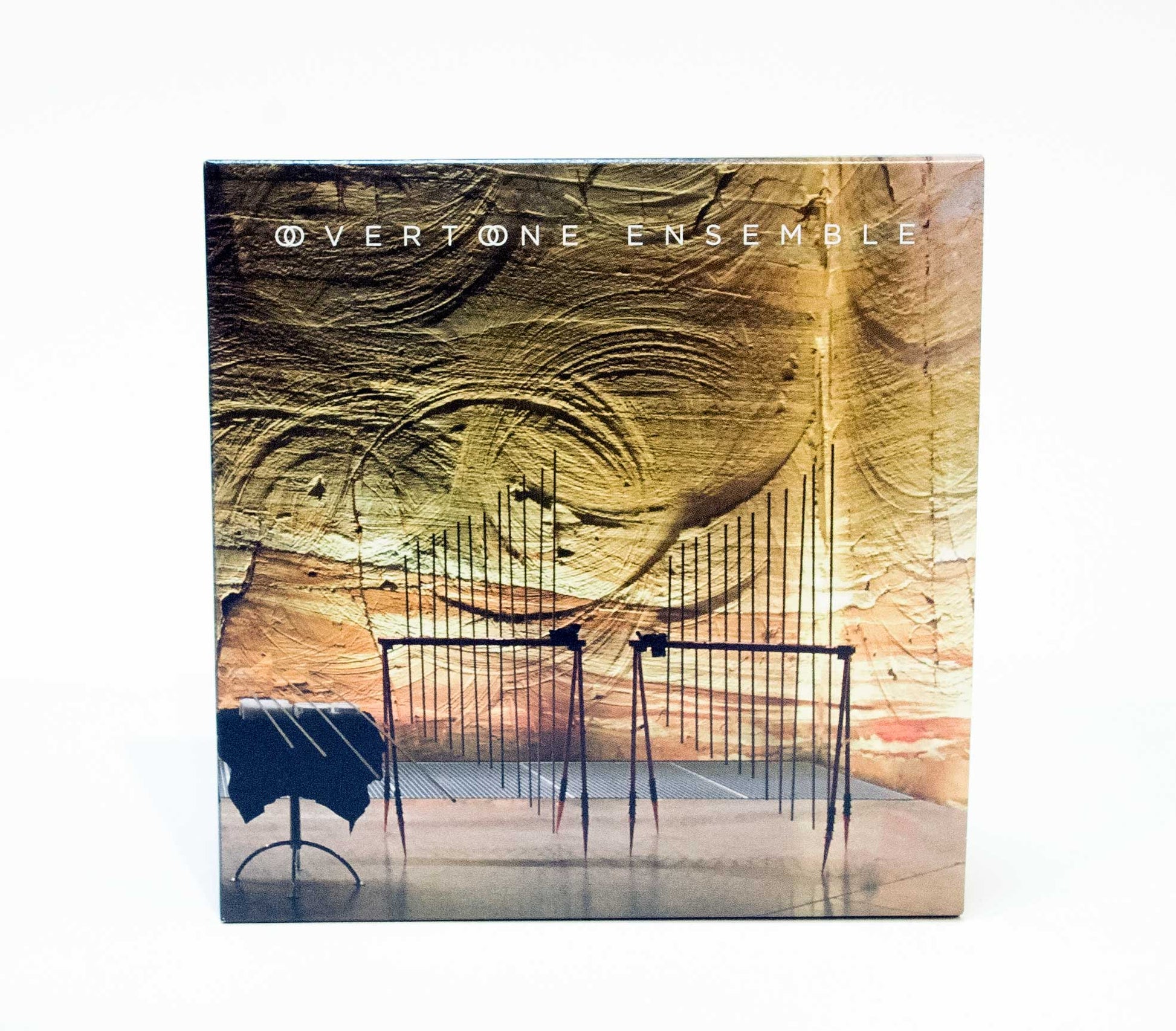1
/
of
2
Overtone Ensemble - 2 - CD
Overtone Ensemble - 2 - CD
Regular price
$12.00 USD
Regular price
Sale price
$12.00 USD
Unit price
/
per
Couldn't load pickup availability
Share
Tim Catlin formed the Overtone Ensemble in 2012 in order to perform works using his self-made Vibrissa instruments. The Vibrissa includes twelve vertically mounted aluminium rods that are longitudinally stroked with gloved hands to produce ethereal “singing” tones. The long sustaining nature of the rods sound and microtonal tunings allow players a sonic palette of complex textures and harmonic complexity.
Expanding from the instrumentation on their first album, these new recordings utilize Vibrissa instruments, plus a range of extended techniques on old instruments including timpani, bowed piano, bowed glockenspiel, bowed guitar as well as some new instruments like doppler rods and whirled tubes.
The majority of the recordings were done in the Old Chapel building in Melbourne, Australia. The chapel, formerly attached to the Old Melbourne Gaol boasts 10 metre high ceilings which added an enveloping acoustic ambience. At times it felt as though the spectral presences of former inmates were hovering benevolently in the rafters watching on.
Heliotrope
A Deep Listening suite using just intonation tuned vibrissa instruments only.
Sustained bowing gestures emphasise the pure tones of the vibrissa instruments.
Slow transitions in harmonic density and microtonal inflection add complexity and movement beneath the apparent surface stillness of the music.
Inland Sea
A focused, slowly evolving sonic meditation allowing the listeners attention
to shift between detailed sonic minutiae and evolving long held drones.
Long aluminium rods (2 metres plus) were recorded as “close tuned” pairs for beating effects. Regular vibrissa instruments provide a glistening high-end sheen whilst acoustic guitar drones add harmonic richness and grit. Timpani hits add an anchoring intermittent rhythm.
Piano Man
Recorded on an abandoned piano in a studio slated for demolition. The pianos tuning may not have been at concert pitch, but was perfect for the purpose.
Lengths of fishing line were coated with rosin and woven between the piano strings at harmonic points. The lines were pulled tight and bowed back and forth to create long dense drones. Whirled tubing and rotating Doppler Rods recordings created fluctuating frequencies and tremolo effects.
(Not an homage to Billy Joel!)
Somnambulist
Short bowing strokes give the vibrissa a sound akin to a reed instrument like an accordion or a shõ. Static harmonies and gentle pulsations shimmer in the air. Bowed glockenspiels (re-tuned to produce beating effects) waver and ebb like motes adrift in afternoon sunlight.
Wires and Drums
Timpani solo performance by Philip Brophy accompanied by Long Wire performance recordings by the ensemble. The wire vibrations recorded are mostly longitudinal - the same principle as Ellen Fullmans long string recordings.
In fact, long string instruments and the vibrissa are two very rare examples of instruments that produce sound in this way! (Longitudinal rather than transverse vibrations.)
Instruments
Vibrissa -Each instrument consists of twelve vertically mounted aluminium rods that are longitudinally stroked with gloved hands to produce ethereal “singing” tones. The long sustaining nature of the rods sound and microtonal tunings allow players a sonic palette of complex textures and harmonic complexity.
Long Rods - Aluminium rods (2 metres plus). These were mounted horizontally on resonators and bowed in a similar manner to the Vibrissa. (The length of the rod determines the pitch), The long rods were recorded as “close tuned” pairs for beating effects.
Long Wires - 20 m long steel wires attached to steel resonators. The wires were bowed and struck with rosined hands. Sounds range from ghostly harmonics to violent percussions.
Doppler rods –Vibrissa rods, played and spun by hand to produce a wavering pitch.
Whirled tubing – Lengths of corrugated tubing spun overhead for harmonic effects. Changing the speed of rotation creates pitch shifting and tonal effects.
Bowed Glockenspiel – Re-tuned glockenspiels that are close tuned for a shimmering effect. Played with violin bows.
Bowed Piano – Rosined fishing wire is threaded through the strings. A back and forth bowing with the sustain pedal down produces a variety of harmonic bowing effects. These techniques were inspired by Stephen Scotts bowed piano innovations.
Bowed Guitar – Acoustic guitar played with an e-bow. Low tunings yield percussive and grating frictions as well as deep drones.
Timpani – Orchestral percussion redeployed.
View full details
Expanding from the instrumentation on their first album, these new recordings utilize Vibrissa instruments, plus a range of extended techniques on old instruments including timpani, bowed piano, bowed glockenspiel, bowed guitar as well as some new instruments like doppler rods and whirled tubes.
The majority of the recordings were done in the Old Chapel building in Melbourne, Australia. The chapel, formerly attached to the Old Melbourne Gaol boasts 10 metre high ceilings which added an enveloping acoustic ambience. At times it felt as though the spectral presences of former inmates were hovering benevolently in the rafters watching on.
Heliotrope
A Deep Listening suite using just intonation tuned vibrissa instruments only.
Sustained bowing gestures emphasise the pure tones of the vibrissa instruments.
Slow transitions in harmonic density and microtonal inflection add complexity and movement beneath the apparent surface stillness of the music.
Inland Sea
A focused, slowly evolving sonic meditation allowing the listeners attention
to shift between detailed sonic minutiae and evolving long held drones.
Long aluminium rods (2 metres plus) were recorded as “close tuned” pairs for beating effects. Regular vibrissa instruments provide a glistening high-end sheen whilst acoustic guitar drones add harmonic richness and grit. Timpani hits add an anchoring intermittent rhythm.
Piano Man
Recorded on an abandoned piano in a studio slated for demolition. The pianos tuning may not have been at concert pitch, but was perfect for the purpose.
Lengths of fishing line were coated with rosin and woven between the piano strings at harmonic points. The lines were pulled tight and bowed back and forth to create long dense drones. Whirled tubing and rotating Doppler Rods recordings created fluctuating frequencies and tremolo effects.
(Not an homage to Billy Joel!)
Somnambulist
Short bowing strokes give the vibrissa a sound akin to a reed instrument like an accordion or a shõ. Static harmonies and gentle pulsations shimmer in the air. Bowed glockenspiels (re-tuned to produce beating effects) waver and ebb like motes adrift in afternoon sunlight.
Wires and Drums
Timpani solo performance by Philip Brophy accompanied by Long Wire performance recordings by the ensemble. The wire vibrations recorded are mostly longitudinal - the same principle as Ellen Fullmans long string recordings.
In fact, long string instruments and the vibrissa are two very rare examples of instruments that produce sound in this way! (Longitudinal rather than transverse vibrations.)
Instruments
Vibrissa -Each instrument consists of twelve vertically mounted aluminium rods that are longitudinally stroked with gloved hands to produce ethereal “singing” tones. The long sustaining nature of the rods sound and microtonal tunings allow players a sonic palette of complex textures and harmonic complexity.
Long Rods - Aluminium rods (2 metres plus). These were mounted horizontally on resonators and bowed in a similar manner to the Vibrissa. (The length of the rod determines the pitch), The long rods were recorded as “close tuned” pairs for beating effects.
Long Wires - 20 m long steel wires attached to steel resonators. The wires were bowed and struck with rosined hands. Sounds range from ghostly harmonics to violent percussions.
Doppler rods –Vibrissa rods, played and spun by hand to produce a wavering pitch.
Whirled tubing – Lengths of corrugated tubing spun overhead for harmonic effects. Changing the speed of rotation creates pitch shifting and tonal effects.
Bowed Glockenspiel – Re-tuned glockenspiels that are close tuned for a shimmering effect. Played with violin bows.
Bowed Piano – Rosined fishing wire is threaded through the strings. A back and forth bowing with the sustain pedal down produces a variety of harmonic bowing effects. These techniques were inspired by Stephen Scotts bowed piano innovations.
Bowed Guitar – Acoustic guitar played with an e-bow. Low tunings yield percussive and grating frictions as well as deep drones.
Timpani – Orchestral percussion redeployed.



